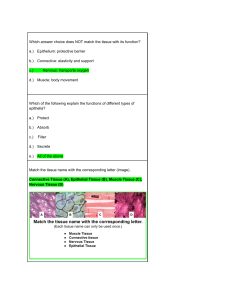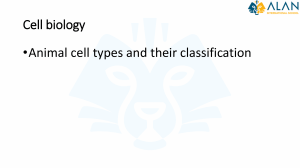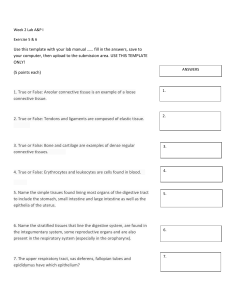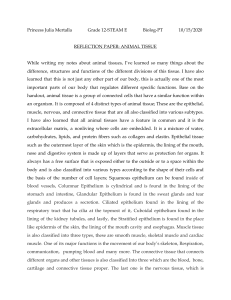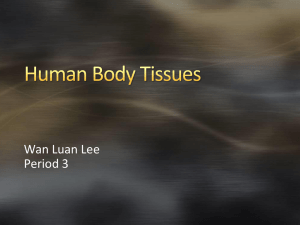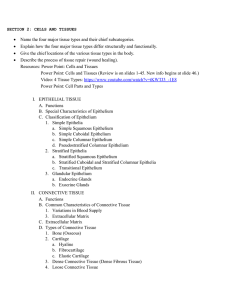Body Tissues
advertisement
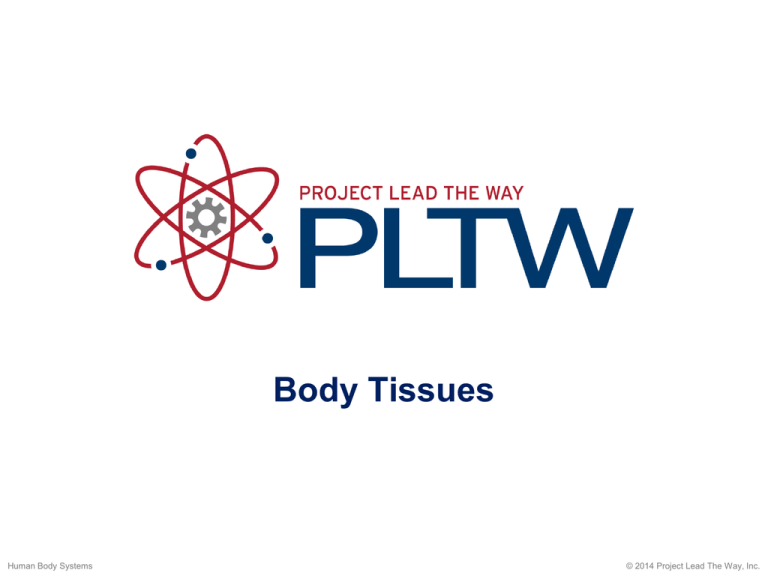
Body Tissues Human Body Systems © 2014 Project Lead The Way, Inc. Tissue Basics • Tissues are groups of cells that are similar in structure that work together to perform a specific function. • There are four main tissue types: – Epithelium – Connective tissue – Muscle – Nervous tissue Epithelium • Epithelium, or epithelial tissue, forms the linings, coverings, and glandular tissue of the body. – One type of epithelium forms the outer layer of the skin – Another type of epithelium lines the air sacs of the lungs • Cells in epithelium are packed tightly together to form continuous sheets Connective Tissue • Connective tissue protects, supports, and binds together other body tissues. • Connective tissue is made up of different types of cells in varying amounts of a nonliving substance around the cells, called the matrix. • Examples of connective tissue include: – – – – Bone Cartilage Adipose tissue (fat) Blood Muscle Tissue • Muscle tissue is specialized to contract and cause movement. • There are three main types of muscle tissue: – Skeletal muscle – Cardiac muscle – Smooth muscle • Can you guess the location and function of each muscle type? Nervous Tissue • Nervous tissue is composed of specialized cells called neurons that receive and send electrical signals in the body. • Nervous tissue responds to stimuli and transmits impulses and together with supporting cells, makes up the brain, spinal cord, and nerves.
